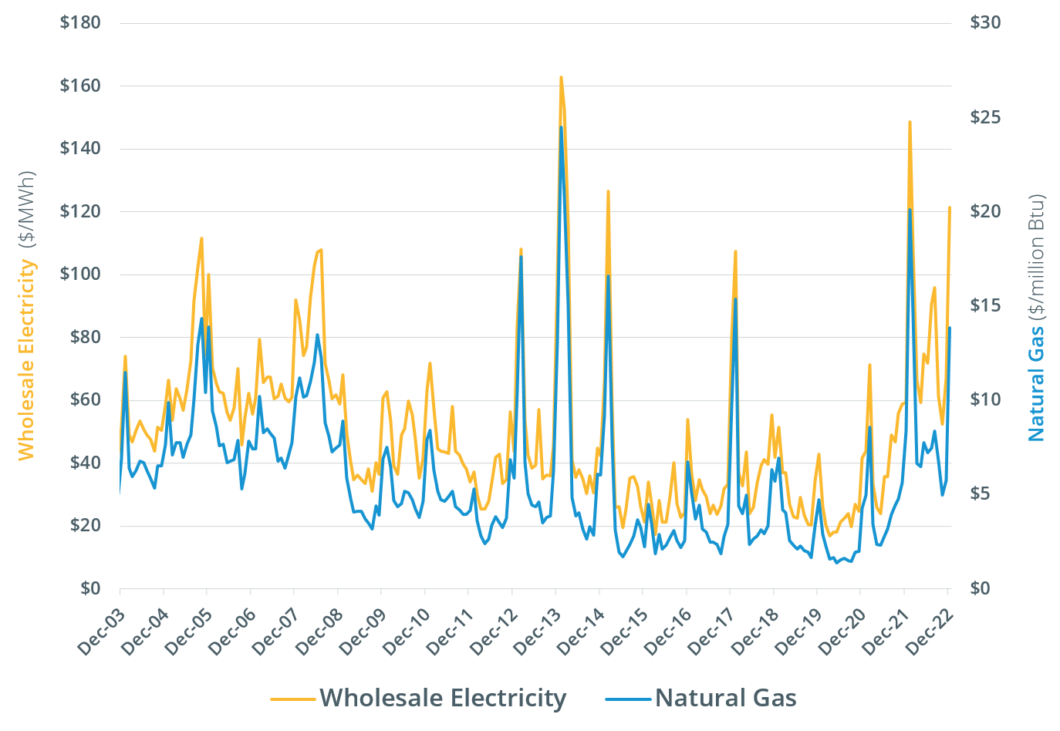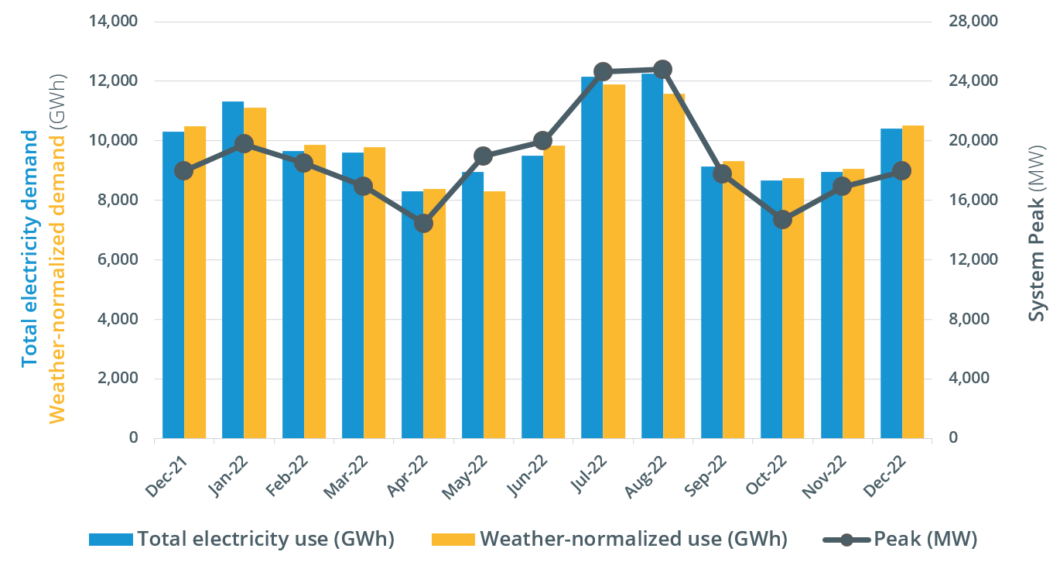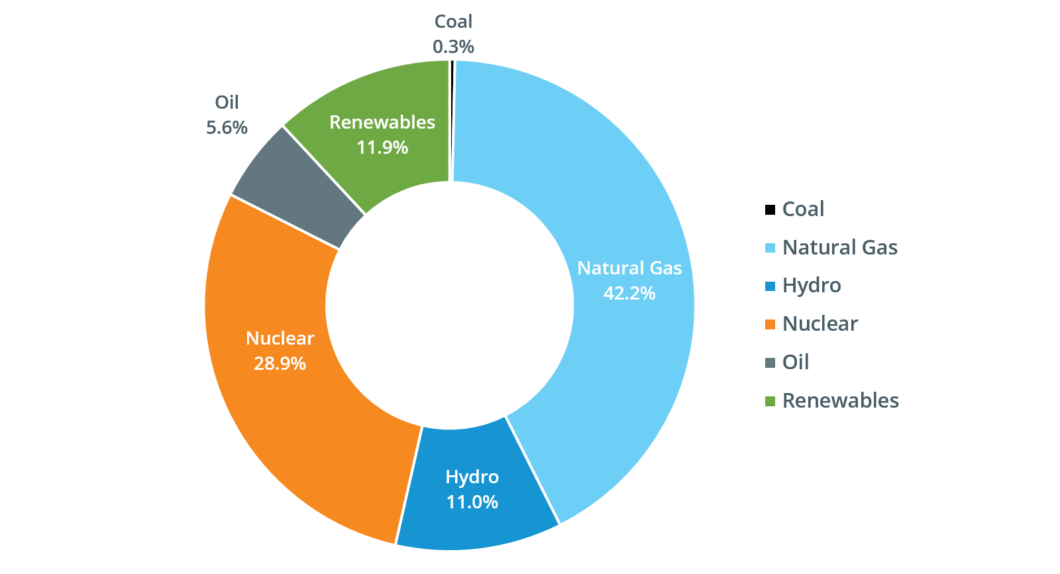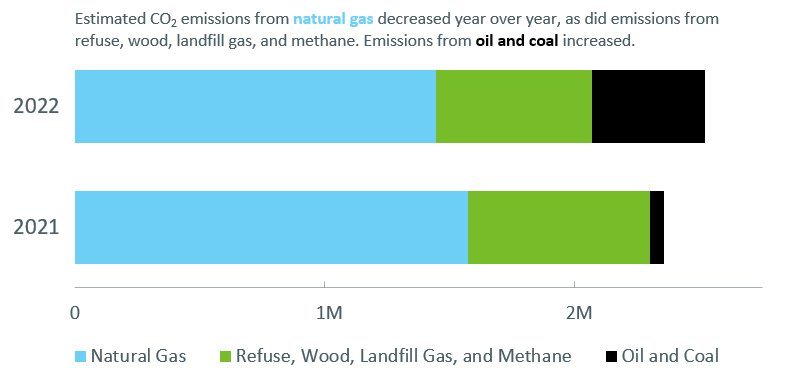Monthly wholesale electricity prices and demand in New England, December 2022

Elevated natural gas prices throughout the month led to a pronounced increase in wholesale electricity costs in December 2022.
Prices averaged $121.47 per megawatt-hour (MWh) in the Real-Time Energy Market, up 104% compared to the previous year.1 Day-Ahead Energy Market averages rose to $115.50/MWh, up 77% from December 2021.
Unexpected generator outages and loss of imports amid cold temperatures caused a spike in real-time energy prices on December 24. The average hourly real-time price peaked at over $2,200 per megawatt-hour from 5 to 6 p.m., contributing to the increase in the month’s average real-time price, which was the fifth-highest on record.
Real-time price spikes tend to have minimal impact on monthly energy market values because the majority of generator commitments are secured in the day-ahead market. Still, with natural gas prices driving higher day-ahead averages, December’s energy market value of $1.33 billion ranks as the ninth-highest monthly value during the nearly two decades the wholesale markets have operated in their current form. The highest monthly energy market value was $2.19 billion in January 2014.
By the numbers
| December 2022 and Percent Change from December 2021 and November 2022 | December 2022 | December 2021 | November 2022 |
| Average Real-Time Electricity Price ($/megawatt-hour) | $121.47 | 104.4% | 80.4% |
| Average Natural Gas Price ($/MMBtu) | $13.86 | 65.4% | 140.6% |
| Peak Demand | 17,949 MW | -0.1% | 6.2% |
| Total Electricity Use | 10,403 GWh | 0.9% | 16.4% |
| Weather-Normalized Use2 | 10,517 GWh | 0.2% | 16.1% |
Drivers of wholesale electricity prices
In general, the two main drivers of wholesale electricity prices in New England are the cost of fuel used to produce electricity and consumer demand.
Power plant fuel
Fuel is typically one of the major input costs in producing electricity. Natural gas is the predominant fuel in New England, used to generate 53% of the power produced in 2021 by New England’s power plants, and natural gas-fired power plants usually set the price of wholesale electricity in the region. As a result, average wholesale electricity prices are closely linked to natural gas prices.
The average natural gas price during December was $13.86 per million British thermal units (MMBtu).3 The price was up 65% from the December 2021 average Massachusetts natural gas index price of $8.38/MMBtu. The Mass. index price is a volume-weighted average of trades at four natural gas delivery points in Massachusetts, including two Algonquin points, the Tennessee Gas Pipeline, and the Dracut Interconnect.
Wholesale electricity and natural gas prices, 2003-2022

Electricity demand
Demand is driven primarily by weather, as well as economic factors. Energy usage during December increased 0.9% to 10,403 GWh from the 10,315 GWh used in December 2021. The average temperature during December was 35˚ Fahrenheit (F) in New England, down 2˚ from the previous December. The average dewpoint, a measure of humidity, was 24˚F in December, down 2˚ from the previous December. There were 932 heating degree days (HDD) during December, while the normal number of HDD in December is 997 in New England. 4 In December 2021, there were 873 HDD. There were no cooling degree days (CDD) during December 2022, which is typical for the region.
Consumer demand for electricity for the month peaked on December 12 during the hour from 5 to 6 p.m., when the temperature in New England was 30°F and the dewpoint was 16°. Demand reached 17,949 MW. The December 2022 peak was 0.1% lower than the December 2021 peak of 17,970 MW, set during the hour from 5 to 6 p.m. on December 20, when the temperature was 29°F and the dewpoint was 13°.
Peak demand is driven by weather, which drives the use of heating and air conditioning equipment. The all-time high winter peak was 22,818 MW, recorded during a cold snap in January 2004 when the temperature was -1°F and the dewpoint was -20°. The all-time peak demand in New England was 28,130 MW, recorded during an August 2006 heat wave, when the temperature was 94°F and the dewpoint was 74°. Air conditioning use is far more widespread than electric heating in New England, so weather tends to have a relatively greater impact on the summer peak than the winter peak.
Monthly peak demand, and total and weather-normalized energy use

Resource mix and emissions
The mix of resources used in any given time period depends on price and availability, as well as supplemental resource commitments needed to ensure system stability.
Natural-gas-fired and nuclear generation produced about 71% of the 8,653 GWh of electric energy generated within New England during December, at about 42% and 29%, respectively. Renewable resources generated about 12% of the energy produced within New England, including 5.2% from wood, refuse, and landfill gas; 4.8% from wind; and 1.8% from solar resources. Hydroelectric resources generated 11.0%, while coal resources generated 0.3%. The region also received net imports of about 1,919 GWh of electricity from neighboring regions.
Oil-fired resources produced 5.6% of the electricity generated within New England in December. These resources often account for less than 1% of the region’s monthly generation, and they produced less than 2% of the electricity generated within New England in 2022. But oil-fired resources are dispatched more often when natural gas prices are high, because the wholesale markets select the lowest-priced resources to produce the electricity needed to meet consumer demand. Oil-fired plants generated significant amounts of electricity between December 23 and 28, coinciding with the highest natural gas prices of the month.
December generation in New England

The mix of resources used to produce the region’s electricity is a key driver of carbon dioxide (CO2) emissions. The ISO estimates these emissions through an analysis that blends data on electricity generation by fuel type with an emissions factor for each fuel that is based on data from the Environmental Protection Agency.
December estimated CO2 emissions in New England, by fuel source (metric tons)

New England power plants produced an estimated 2.5 million metric tons of CO2 in December 2022, up 6.9% from December 2021.
With oil-fired resources generating a larger share of electricity for the month, estimated emissions from these power plants were about 10 times higher than in December 2021. At 418,228 metric tons of CO2, oil-fired resources accounted for about 17% of the region’s total estimatedemissions.
The lower share of the generation mix for the region’s natural gas-fired plants is reflected in an 8% year-over-year decrease in estimated CO2 emissions from these resources, from 1.57 million metric tons to 1.44 million metric tons. Natural gas-fired generation accounted for 57% of the region’s estimated CO2 emissions for the month.
Coal-fired resources produced an estimated 30,838 metric tons of CO2—nearly twice the amount estimated for December 2021, and about 1.2% of the region’s total. CO2 emissions from other resources—mostly refuse and wood—were estimated at 627,190 metric tons in December 2022, down 14% from last year. These resources accounted for about 25% of the region’s estimated CO2 emissions for the month.
1One megawatt (MW) of electricity can serve about 750 to 1,000 average homes in New England. A megawatt-hour (MWh) of electricity can serve about 1,000 homes for one hour. One gigawatt-hour (GWh) can serve about 1 million homes for one hour.
2Weather-normalized demand indicates how much electricity would have been consumed if the weather had been the same as the average weather over the last 20 years.
3A British thermal unit (Btu) is used to describe the heat value of fuels, providing a uniform standard for comparing different fuels. One million British thermal units are shown as MMBtu.
4A degree day is a measure of heating or cooling. A zero degree day occurs when no heating or cooling is required; as temperatures drop, more heating days are recorded; when temperatures rise, more cooling days are recorded. The base point for measuring degree days is 65 degrees. Each degree of a day’s mean temperature that is above 65 degrees is counted as one cooling degree day, while each degree of a day’s mean temperature that is below 65 degrees is counted as one heating degree day. A day’s mean temperature of 90 degrees equals 25 cooling degree days, while a day’s mean temperature of 45 degrees equals 20 heating degree days.

Historical weather data provided by DTN, LLC.; Underlying natural gas data furnished by ICE.
- Categories
- Inside ISO New England
- Tags
- monthly prices, natural gas, wholesale markets, wholesale prices
